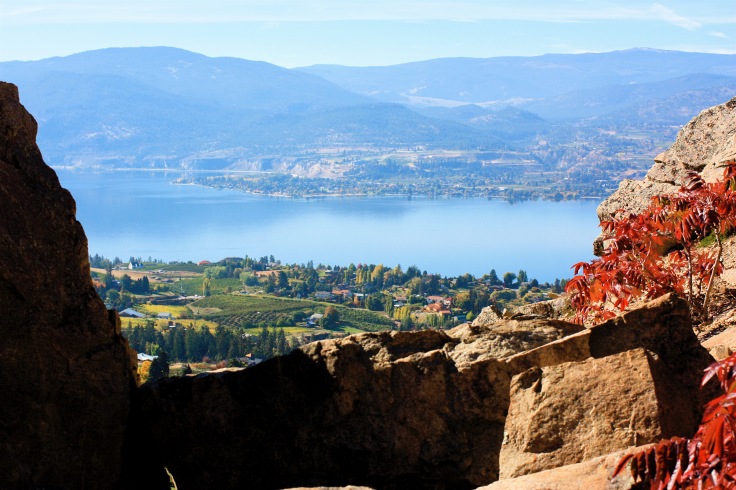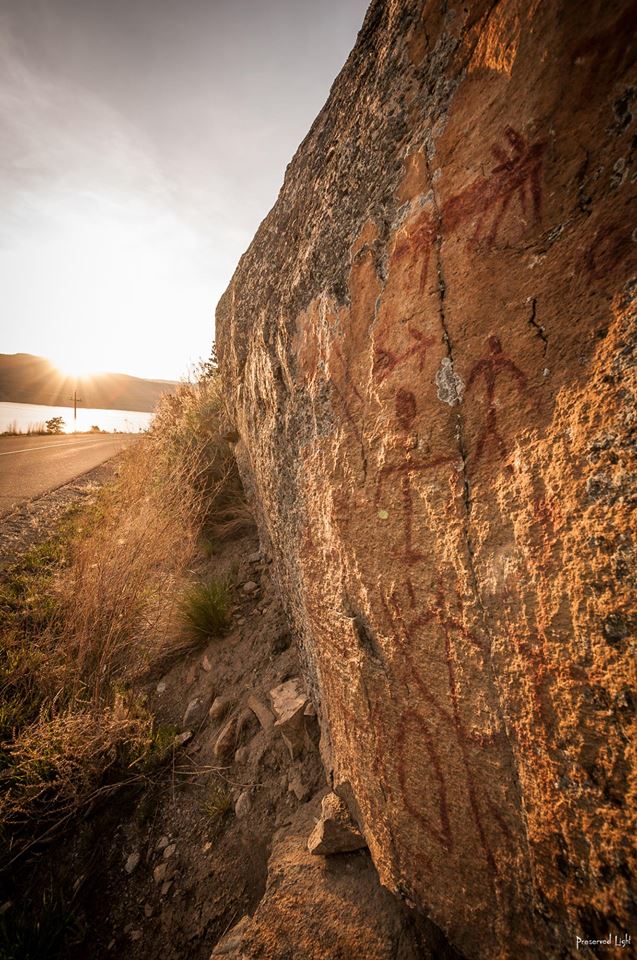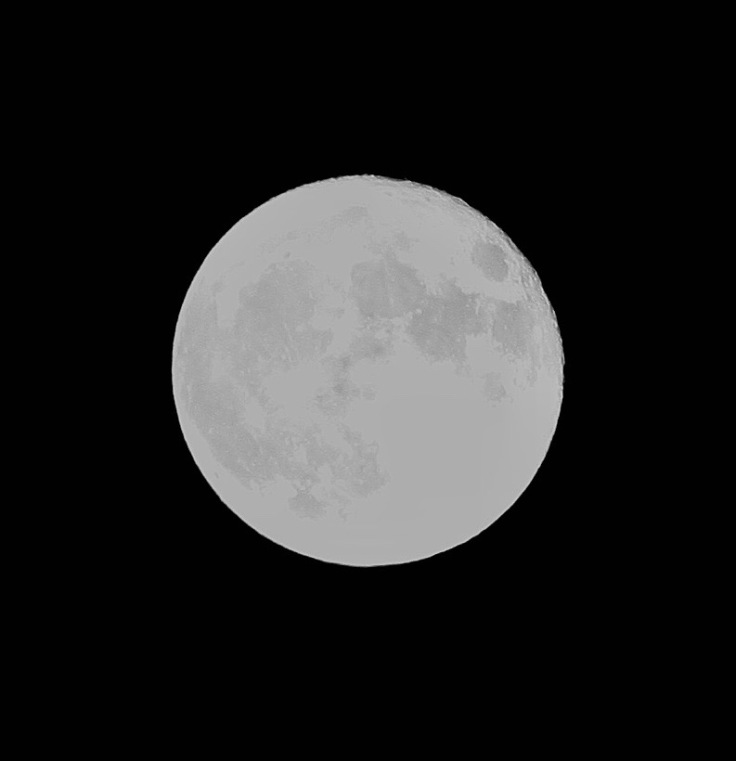
1.Where the Universe Aligns
For a fleeting time every June, around the time of the summer solstice, the setting sun lines up to shine its dying rays through the Kettle Valley Railway’s Little Tunnel, above the Village of Naramata. Photogenic on any day of the year, this tunnel engineered by Andrew McCulloch more than 100 years was blasted out of a rock cliff that hangs dramatically over the Okanagan Lake.
The summer solstice, June 21st, is the longest days of the year for anyone living north of the equator and marks the beginning of summer. If pagan rituals are your thing, how cool would hiking up (or driving) to the tunnel to mark the occasion be?
No one really knows why Stonehenge was built some 5,000 years ago. But one possibility is that it was used to mark solstices and equinoxes. That’s because during the summer solstice, the sun rises just over the structure’s Heel Stone and hits the Altar Stone dead centre. I wonder if McCulloch knew about the solstice magic he created? Bring your camera. Preserved Light‘s Caillum Smith often offers photography workshops at Little Tunnel during the solstice. If you go, don’t touch the tunnel walls when the sun’s rays pierce through it as you will likely be transported through the stone and back in time and find yourself in the middle of the Battle of Culloden. Right?

2. We Love our Public Art

Although I don’t want to reveal the exact location of this amazing art to help preserve it, Naramata has some very special rocks. Some of the most intriguing images of Canadian rock art or pictographs are painted on cliffs in interior British Columbia. The Okanagan Valley of British Columbia is the traditional territory of the Interior Salish peoples, hunters and gatherers who followed a seasonal migration. Their material culture was simple and easily transportable, and they had very little impact on their environment. They did leave behind one sign of their presence however – their paintings on stone, or pictographs.
Painted in red ochres, iron oxides mixed with clay, the designs were applied with fingers or sticks and were thought to be painted by teenagers as part of their puberty rituals or by adults painting images from dreams.
3. We Aren’t Afraid of the Dark

A big part of the appeal of Naramata is what we don’t have such as no fast-food outlets, no traffic lights, no industrial development and very few streetlights. It’s dark at night, inky black in some spots and this is rare today and valuable.
Star gazing, Northern Lights watching and awareness of the phases of the moon are a special part of life here and should not be undervalued according to Elizabeth Griffin, Visiting Astronomer at the NRC, and also Member of the Light Pollution Committee, Royal Astronomical Society of Canada – Victoria Centre. “Light pollution affects astronomy in a big way. Stars are faint and distant and the scattered light from our cities makes them hard to see. Observation now requires costly equipment in remote locations,” she says. “All this light is bad for us as well. We don’t sleep as well when its not dark meaning we have less melatonin that we need to repair our bodies. Light pollution damages sensitive eco-systems like those of insects and birds, and eventually damages the whole bio-system upon which we depend for food.”
(This helps explain why our guests from urban areas talk about how well they sleep here…)
Dr. Griffin tells me a story passed on by the director of the Griffith Observatory in Los Angeles. “There was a significant earthquake in 1980 in the LA area and it disrupted electrical cables plunging LA into darkness. The switchboard at the observatory became jammed with calls by people reporting that they had seen something unusual. It turns out that they were able to see the Milky Way for the first time. There is something so sad about that.”
We can see the Milky Way here and many other constellations and planets by lying on our backs on our lawn and gazing up. “You are lucky,” says Dr. Griffin. “Municipalities are doing quite a lot like ensuring street lights are angled down and shutting off sport’s field lights at night but there are no laws regulating the use of domestic lights. All we can do is try to educate people that all this light is damaging and unnecessary and that they are missing out on something special.
“The Okanagan is good for star watching,” adds Dr. Griffin. “You are relatively sparsely populated there and there are a lot of pockets behind the mountains where you are quite well shielded from lights.”
Along with embracing the darkness, Naramatians are also treated to quiet that allows us to hear birds and wildlife. My current favourite thing is opening my deck door early in the morning to listen to a pair of owls talking to each other. Also part and parcel of life in our Village are the wonderful scents of sage and pine that are released in summer evenings on hot days.

4. We Let it All Slip Slide Away
There is a little-known spot on Naramata Creek where a waterfall has some chutes and pools suitable for a little sliding. Tucked away up Arawana, an old forest service road, and along a trail, these rock slides provide a bit of cool fun.

5. We are Internationally Recognized for our Slow Pace of Life
Naramata is one of only three Canadian communities with a special status as a “slow city” bestowed on us by Cittaslow, an international organization formed in Orvieto Italy in 1999. We join Cowichan Bay and Wolfville as places where the pace of life is a bit more human.
To quote from the charmingly translated Italian on the Cittaslow website, “A Cittaslow place is motivated by curious people of a recovered time, where man is still protagonist of the slow and healthy succession of seasons, respectful of citizens’ health, the authenticity of products and good food, rich of fascinating craft traditions, of valuable works of art, squares, theatres, shops, cafes and restaurants. These are places of the spirit and unspoiled landscapes characterized by spontaneity of religious rites and respect the traditions of the joy of slow and quiet living.”
As a way of celebrating our Cittaslow status, Naramata holds a harvest dinner in the fall. One of the organizers of the dinner, Miranda Halladay, said, “ Naramatians have an encyclopedia of reasons why they feel lucky enough to call this place home, covering the spectrum from peacocks (a secret for another day…we have resident peacocks that wander around in our Village) to people. The Cittaslow designation prompts us to think and to talk about these aspects of our community, to protect and foster these elements that are integral to living NaramataSlow.
“Creating and sharing a meal focused on the immense and delicious bounty our community produces with friends, neighbours and visitors alike feels like a natural tradition in the making, and the right way to foster conversation.”
Thanks to Preserved Light for collaborating with me on this post!


December 15, 2017 at 7:50 pm
Brings tears to my eyes Callum to see the photos and read the words you have written about the wonderful little village that we were so fortunate be born into and still live in.
LikeLike
December 15, 2017 at 8:10 pm
Awesome photos are from Preserved Light but the writing is all mine….glad you enjoyed it! Elaine
LikeLike
August 3, 2020 at 1:56 am
Do you have more details on the water slides?
LikeLike
August 3, 2020 at 2:32 am
LikeLike
August 3, 2020 at 2:33 am
https://www.youtube.com/watch?v=YXcYJYX1WUA Here is a bit more of a hint…but hey, it’s a secret
LikeLike